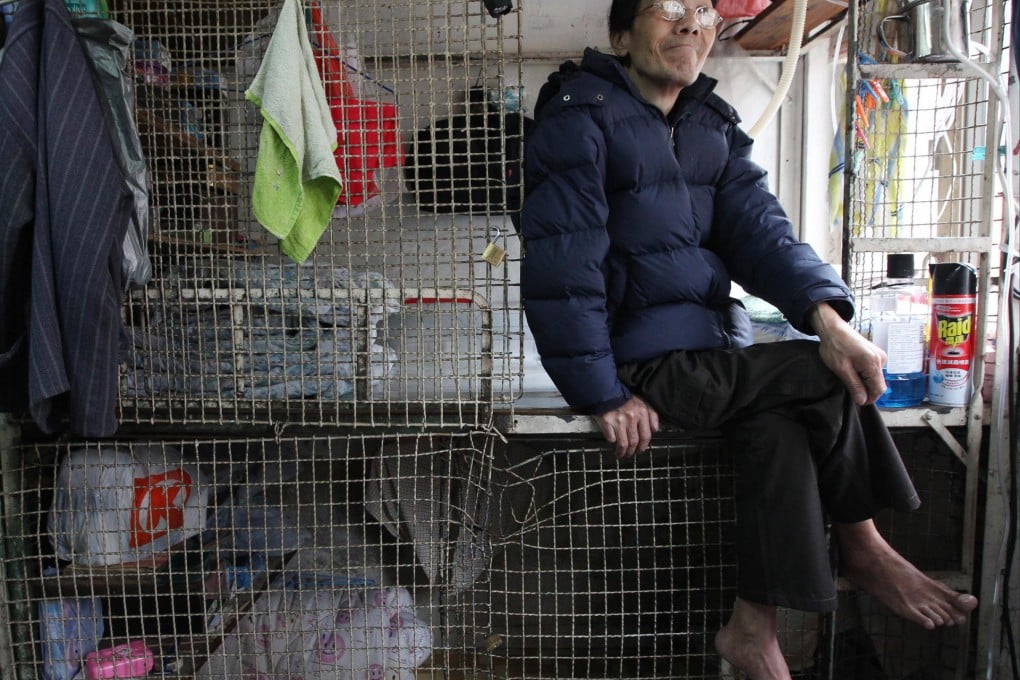Plight of Hong Kong's cage-home dwellers 'worse now than 25 years ago'
Ten-year queue for public housing put Tang Man-wai off even applying. He is one among many thousands who have grown used to life in a cage

More than 25 years ago, Ho Hei-wah took up advocacy work after witnessing the plight of Hong Kong's cage-home dwellers. Back then, he had never thought the problem would still be around a quarter of a century later, with no signs of improvement.
Standing in a dirty flat in Sham Shui Po where eleven cage homes were stacked on top of each other, Ho - who heads the NGO Society for Community Organisation (Soco) - said the problem was getting worse, especially for a new generation who had grown up in such conditions.
"A home is not just about a place to sleep. It affects the emotional and psychological well-being of a whole family," he said. "It's not a new topic."
This year's Hong Kong ArtWalk, to be held on March 12, features eight shocking photos of cubicles and cage homes titled Living at Limit. The photos, by Hong Kong photographer Benny Lai, will accompany an installation recreating a cage home at The Space gallery on Hollywood Road.
ArtWalk is an annual fundraising event in which over 60 galleries in Central open their doors to the public. Proceeds from ticket sales are donated to Soco.
Tang Man-wai has lived in cage homes for 30 years. He had never even applied for public housing until a few months ago, when doctors found mould in his lungs and warned him that living in a cage home was hazardous to his health. Tang, 64, now needs an oxygen mask to breathe.
